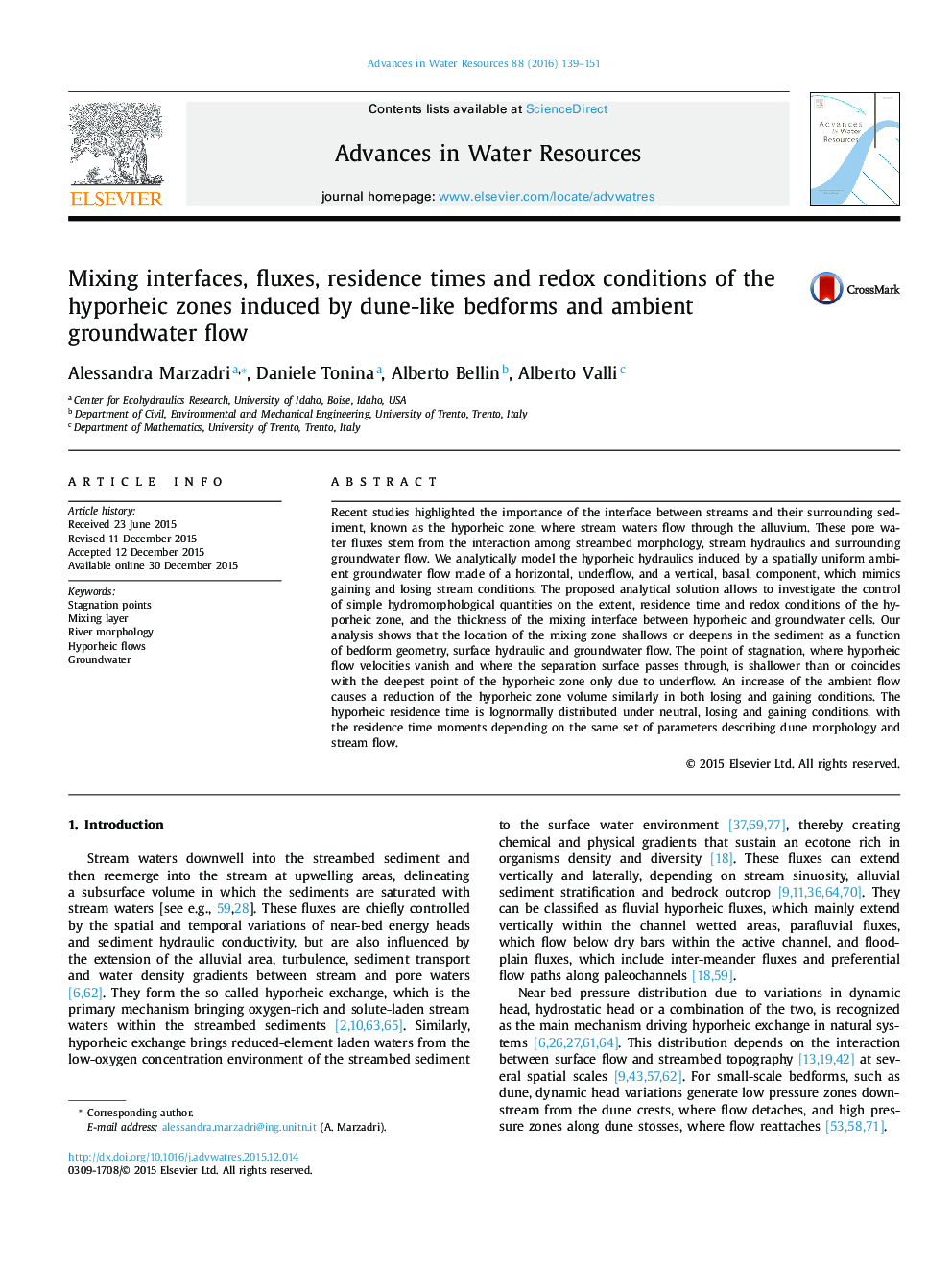| کد مقاله | کد نشریه | سال انتشار | مقاله انگلیسی | نسخه تمام متن |
|---|---|---|---|---|
| 4525329 | 1625622 | 2016 | 13 صفحه PDF | دانلود رایگان |
• Describe the interaction between hyporheic and groundwater fluxes (dune morphology).
• Quantify the effect of groundwater on shape and dimensions of the hyporheic cells.
• Quantify the influence of groundwater flow on the statistical moments of the RTD.
• Develop a method to quantify the global biogeochemical status of the hyporheic zone.
Recent studies highlighted the importance of the interface between streams and their surrounding sediment, known as the hyporheic zone, where stream waters flow through the alluvium. These pore water fluxes stem from the interaction among streambed morphology, stream hydraulics and surrounding groundwater flow. We analytically model the hyporheic hydraulics induced by a spatially uniform ambient groundwater flow made of a horizontal, underflow, and a vertical, basal, component, which mimics gaining and losing stream conditions. The proposed analytical solution allows to investigate the control of simple hydromorphological quantities on the extent, residence time and redox conditions of the hyporheic zone, and the thickness of the mixing interface between hyporheic and groundwater cells. Our analysis shows that the location of the mixing zone shallows or deepens in the sediment as a function of bedform geometry, surface hydraulic and groundwater flow. The point of stagnation, where hyporheic flow velocities vanish and where the separation surface passes through, is shallower than or coincides with the deepest point of the hyporheic zone only due to underflow. An increase of the ambient flow causes a reduction of the hyporheic zone volume similarly in both losing and gaining conditions. The hyporheic residence time is lognormally distributed under neutral, losing and gaining conditions, with the residence time moments depending on the same set of parameters describing dune morphology and stream flow.
Journal: Advances in Water Resources - Volume 88, February 2016, Pages 139–151
